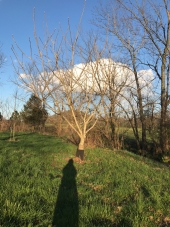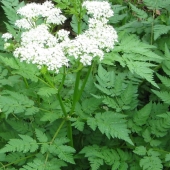
 8
8




 2
2








 Thanks for the info!
Thanks for the info!I make a Maple Syrup instructional movie! Check it out HERE
SKIP books, get 'em while they're hot!!! Skills to Inherit Property
See me in a movie building a massive wood staircase:Low Tech Lab Movie
 2
2




Do, there is no try --- Yoda
No one is interested in something you didn't do--- Gord Downie




Ben
Soggysox Farm
 4
4




![Filename: juggalone.jpg
Description: [Thumbnail for juggalone.jpg]](/t/117880/a/83413/juggalone.jpg)
Ben
Soggysox Farm
 2
2





I make a Maple Syrup instructional movie! Check it out HERE
SKIP books, get 'em while they're hot!!! Skills to Inherit Property
See me in a movie building a massive wood staircase:Low Tech Lab Movie
 4
4




I make a Maple Syrup instructional movie! Check it out HERE
SKIP books, get 'em while they're hot!!! Skills to Inherit Property
See me in a movie building a massive wood staircase:Low Tech Lab Movie
 3
3








If there is one thing the Wizard of Oz has taught me, it is not to trust school teachers on bicycles.
 3
3




Designer, herbalist, hiker in Hurley, NY, USA. Zone 6. They/them.




Designer, herbalist, hiker in Hurley, NY, USA. Zone 6. They/them.




 3
3




 2
2




 4
4




 3
3




Donna Lynn wrote:I've tried four different types of Elderberry near my black walnut trees after reading that they were juglone tolerant. None of them survived more than a few months or so. I read that tomatoes and peppers were tolerant, so I tried several of those one year. Only one hot pepper plant (Anaheim) did well enough to harvest a handful of fruit from. I got one small ripe tomato off a stunted plant, but that was it. Most of them got decent sun, at least half day. The hot pepper that fruited was on the south end and got the most sun out of that group.
Donna Lynn wrote:I need a fruiting or edible groundcover for that area. Would love to have cranberries or wintergreen, but not sure whether they are tolerant.
Designer, herbalist, hiker in Hurley, NY, USA. Zone 6. They/them.
 4
4




Marvin Warren wrote:
Donna Lynn wrote:I've tried four different types of Elderberry near my black walnut trees after reading that they were juglone tolerant. None of them survived more than a few months or so. I read that tomatoes and peppers were tolerant, so I tried several of those one year. Only one hot pepper plant (Anaheim) did well enough to harvest a handful of fruit from. I got one small ripe tomato off a stunted plant, but that was it. Most of them got decent sun, at least half day. The hot pepper that fruited was on the south end and got the most sun out of that group.
I'm surprised by all of this. Both that the elderberries failed, and that you heard that nightshades are juglone tolerant - they're at the top of every list I've ever seen for juglone susceptibility. I wonder what other conditions might have led to the elderberries' demise; I've got a red one growing in the shade of an enormous walnut tree at a client's place, and if it weren't for the deer it would be enormous by now.
Donna Lynn wrote:I need a fruiting or edible groundcover for that area. Would love to have cranberries or wintergreen, but not sure whether they are tolerant.
I wouldn't bother with cranberries or wintergreen; not only have I not heard of or seen their having any tolerance, they both like highly acidic conditions that you're not likely to see around a walnut. I'd recommend Fragaria vesca, woodland strawberry as a groundcover and/or gooseberries and possibly goumi in the shrub layer for fruit.
 3
3




Bee Brode wrote:I've read somewhere that mulberry will exude a juglone anti-toxin when planted near walnuts. I have seen mulberries growing quite happily near walnuts, and have seen a diversity of species thriving in the vicinity, so I am inclined to believe the claim, but don't have any scientific data to back it up.
 1
1




Make a small biochar kiln and biochar them. I wonder if extra biochar under and past the drip line would actually sequester some of the Juglone - or hang onto microbes that like to break down juglone - and actually help you with the problems you're having? I haven't had experience with this - maybe ask the question over in the biochar forum? ( https://permies.com/f/190/biochar )We now, after stacking the firewood, have about two heaping wheelbarrows full of nut shells to dispose of! (Any ideas??)
Visit Redhawk's soil series: https://permies.com/wiki/redhawk-soil
How permies.com works: https://permies.com/wiki/34193/permies-works-links-threads
 1
1




Jay Angler wrote:Donna Lynn wrote:
Make a small biochar kiln and biochar them. I wonder if extra biochar under and past the drip line would actually sequester some of the Juglone - or hang onto microbes that like to break down juglone - and actually help you with the problems you're having? I haven't had experience with this - maybe ask the question over in the biochar forum? ( https://permies.com/f/190/biochar )We now, after stacking the firewood, have about two heaping wheelbarrows full of nut shells to dispose of! (Any ideas??)




Marvin Warren wrote:
I've sort of carved a niche out for myself as the local juglone expert, and in the process I've gained a lot of firsthand experience with our lovely native walnuts. Here's what I've personally tried and witnessed so far that I haven't seen already listed:
...
-Ribes
sally considered 'permaculture plants', but they all have their uses, whether food, medicine, groundcover, early-season nectar, etc.
Also, where's this wiki? And in the original post, when you say sorrel, do you mean Rumex or Oxalis (or both)?

|
Royal Flush Bitches! Pay up tiny ad:
The new purple deck of permaculture playing cards
https://www.kickstarter.com/projects/paulwheaton/garden-cards
|




